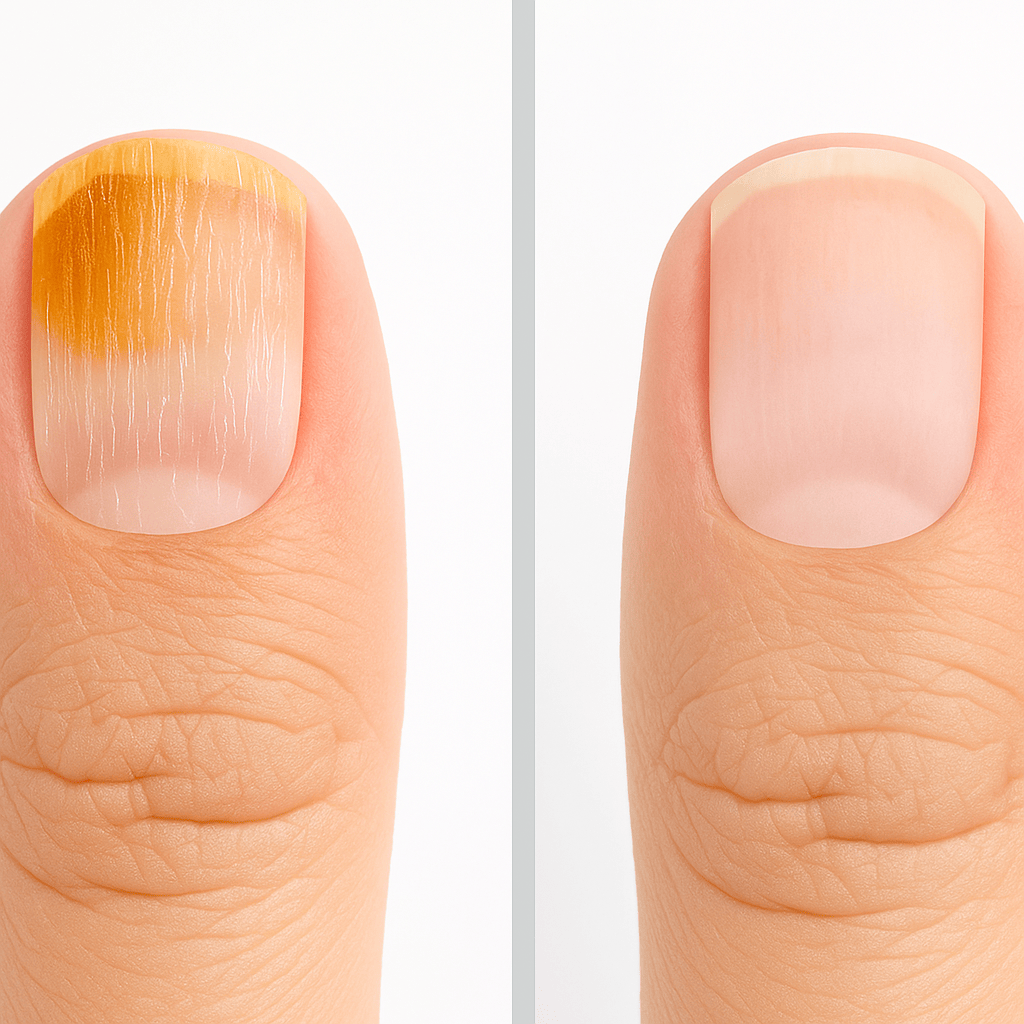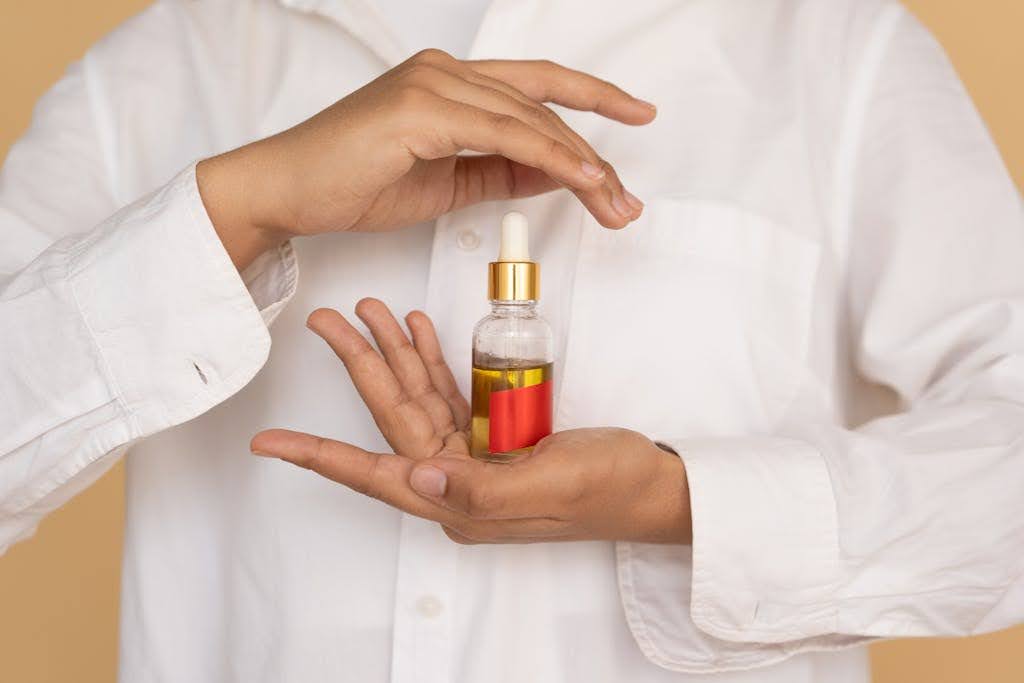Tirzepatide for Sleep Apnea - Can It Help?
Understanding Sleep Apnea and Its ChallengesSleep apnea is a common yet serious sleep disorder characterized by repeated interruptions in breathing during sleep. These pauses [...]
Read More
Medically reviewed by Abhijit Bhattacharyya | MD, PhD, MBA, Tufts University School of Medicine - Miami, Florida on May 21st, 2025.
Toenail fungus, medically known as onychomycosis, is a common condition that can cause discomfort and embarrassment. Many individuals struggle with this issue, often wondering how to determine if their treatment is effective and the infection is on the mend. Let's understand how to know if toenail fungus is dying and the signs crucial for maintaining and ensuring proper care. This article will explore various indicators that suggest your toenail fungus is finally clearing up.
 Recognizing the Symptoms of Toenail Fungus
Recognizing the Symptoms of Toenail FungusBefore diving into the signs of improvement, it’s important to understand the typical symptoms associated with toenail fungus. These symptoms can vary in severity and may include:
Discoloration of the nail (yellow, brown, or white)
Thickening of the nail
Crumbly or brittle texture
Distorted nail shape
Separation of the nail from the nail bed
Being aware of these symptoms can help you assess the initial severity of your infection and track changes over time. Additionally, it’s crucial to recognize that toenail fungus can sometimes be mistaken for other nail conditions, such as psoriasis or nail trauma. Therefore, consulting with a healthcare professional for an accurate diagnosis is advisable, particularly if symptoms persist or worsen.
As treatment progresses, several signs can indicate that toenail fungus is beginning to clear up. Noticing these changes early can help you stay positive and committed to your treatment plan. It's essential to remember that patience is key, as the healing process can be gradual and may require consistent care and attention.
1. Change in Nail Color
One of the first signs that toenail fungus is improving is a noticeable change in nail color. Initially, infected nails may appear yellow or brown. As the fungus clears, you may observe:
A gradual return to a more natural color
New growth at the base of the nail that is free from discoloration
Keep in mind that this process may take time, as nails grow slowly. Regularly monitoring the color can provide reassurance that the treatment is effective. Moreover, maintaining good hygiene practices, such as keeping your feet clean and dry, can further support this positive change. Using antifungal powders or sprays can also help prevent moisture buildup, which is a breeding ground for fungi.
2. Decreased Thickness
Another positive sign is a reduction in the thickness of the nail. Infected nails often become thick and brittle, making them difficult to trim. As the fungus clears, you may notice:
A softer and thinner nail
Improved ease in trimming and maintaining the nail
This change not only improves the appearance of the nail but also reduces discomfort associated with thickened nails. In addition, a thinner nail can help restore normal nail function, allowing for better fitting of shoes and increased comfort during daily activities. Regularly trimming the nail, while being careful not to injure the surrounding skin, can also facilitate this process.
3. Improved Texture
The texture of the nail can also indicate improvement. Infected nails may feel rough or crumbly. Signs that your toenail fungus is clearing up include:
A smoother surface
A reduction in brittleness
These changes can enhance both the aesthetic and functional aspects of your toenails. As the texture improves, you may find that your nails are less prone to breaking or chipping, which can be a significant relief. Additionally, maintaining a balanced diet rich in vitamins and minerals can support overall nail health, promoting stronger and healthier growth as the fungus recedes. Incorporating biotin and zinc into your diet may be particularly beneficial for nail strength and resilience.
As toenails grow, observing the new growth can be a key indicator of improvement. Regularly checking the growth at the base of the nail can provide insight into how effectively the fungus is being treated. This process not only involves visual inspection but also requires a bit of patience, as toenails can take several months to fully grow out. Keeping a record of your observations can be beneficial, as it allows you to track changes over time and discuss them with your healthcare provider if necessary.
New nail growth is typically free from infection. Monitoring this growth can help you determine if the fungus is clearing. Here are some tips for assessing new nail growth:
Look for a clear line of demarcation where the new nail meets the old infected nail.
Note any changes in color or texture in the new growth.
Healthy new growth is a strong indicator that treatment is working and the infection is resolving. Additionally, pay attention to the thickness of the new nail; a thicker nail can sometimes indicate a healthier growth cycle. If you notice any abnormalities, such as ridges or pitting, it may be worth consulting a specialist to rule out any underlying conditions.
 Nail growth rates can vary significantly from person to person. On average, toenails grow about 1.5 millimeters per month. Factors that can influence nail growth include:
Nail growth rates can vary significantly from person to person. On average, toenails grow about 1.5 millimeters per month. Factors that can influence nail growth include:
Age
Diet
Overall health
Understanding your nail growth rate can help set realistic expectations for improvement timelines. For instance, younger individuals often experience faster nail growth, while older adults may notice a slowdown. A nutrient-rich diet, particularly one high in biotin, zinc, and protein, can also promote healthier nail growth. Incorporating foods such as eggs, nuts, and leafy greens can provide the essential vitamins and minerals needed for optimal nail health. Furthermore, maintaining proper hydration and avoiding harsh chemicals can significantly impact the overall condition of your nails.
While self-assessment is valuable, consulting with a healthcare professional is essential for a comprehensive evaluation. They can provide expert insights and guidance on your treatment plan, ensuring that you receive care tailored to your individual needs. Healthcare professionals can also help you understand the underlying causes of your condition, which is crucial for effective treatment and prevention of future occurrences.
It is advisable to seek professional help if:
You do not see any improvement after several weeks of treatment.
The infection appears to be worsening.
You experience pain, swelling, or other concerning symptoms.
A healthcare professional can recommend alternative treatments or additional interventions if necessary. They may also perform diagnostic tests to rule out other conditions that could mimic the symptoms of toenail fungus, such as psoriasis or nail trauma. Early intervention can prevent complications and lead to a more favorable outcome.
There are various treatment options available for toenail fungus, ranging from topical treatments to oral medications. Some common options include:
Topical antifungal creams and lacquers
Oral antifungal medications
Laser therapy
Discussing these options with a healthcare provider can help determine the best course of action for your specific situation. In addition to these treatments, healthcare professionals may also suggest lifestyle changes, such as improving foot hygiene and choosing breathable footwear, to help prevent future infections. Understanding the importance of maintaining a healthy environment for your feet can significantly enhance the effectiveness of any treatment plan.
In addition to professional treatments, there are several home remedies and self-care practices that may support the healing process. While these methods may not replace medical treatment, they can complement it effectively. Many individuals seek out these alternatives not only for their accessibility but also for their holistic approach to health and wellness.
 Some individuals find success using natural remedies to help clear toenail fungus. Common options include:
Some individuals find success using natural remedies to help clear toenail fungus. Common options include:
Tea tree oil: Known for its antifungal properties, tea tree oil can be applied directly to the affected nail.
Apple cider vinegar: Soaking the affected foot in a mixture of apple cider vinegar and water may help inhibit fungal growth.
Garlic: Applying crushed garlic to the nail may provide antifungal benefits.
While these remedies may offer some relief, it is important to note that results can vary, and they should be used in conjunction with professional treatment. Additionally, some users have reported enhanced results when combining these natural remedies with a balanced diet rich in vitamins and minerals, which can support the immune system and overall skin health.
Good foot hygiene is essential for preventing and treating toenail fungus. Here are some tips to maintain cleanliness:
Keep feet clean and dry, especially between the toes.
Wear moisture-wicking socks and breathable footwear.
Avoid walking barefoot in public places, such as pools and gyms.
Implementing these practices can help reduce the risk of reinfection and promote overall foot health. Regularly trimming toenails straight across and avoiding overly tight footwear can also prevent nail trauma, which is a common entry point for fungal infections. Furthermore, consider using antifungal powders or sprays in your shoes to help keep them dry and free from fungal spores, especially during warm weather or after workouts.
As treatment progresses, it is important to recognize the signs that indicate complete recovery from toenail fungus. Understanding these signs can provide reassurance and help in maintaining long-term foot health.
A completely healthy toenail should exhibit the following characteristics:
A uniform color, typically a healthy pink or beige
A smooth and even texture
A consistent thickness without any distortion or separation
Once these characteristics are observed, it is a strong indication that the fungal infection has been successfully eradicated. Additionally, the surrounding skin should also appear healthy, free from redness or irritation, which further supports the notion of complete recovery. It is essential to note that the regrowth of the nail may take several months, and patience is key during this period. Regular check-ups with a healthcare professional can help monitor the healing process and ensure that no underlying issues persist.
After recovery, it is crucial to maintain regular nail care to prevent future infections. This includes:
Trimming nails regularly and keeping them at a manageable length
Moisturizing the feet to prevent dryness and cracking
Monitoring for any signs of recurrence
Being proactive about nail care can significantly reduce the likelihood of toenail fungus returning. In addition to these practices, wearing breathable footwear and choosing moisture-wicking socks can further enhance foot health. It is also advisable to avoid sharing nail clippers or footwear with others, as this can increase the risk of re-infection. Engaging in regular foot inspections, especially for those with diabetes or compromised immune systems, can help catch any potential issues early, ensuring that feet remain healthy and fungus-free.
Prevention is key to avoiding future episodes of toenail fungus. Implementing a few simple strategies can go a long way in maintaining healthy nails.
Choosing the right footwear is crucial for foot health. Consider the following:
Opt for shoes made from breathable materials.
Avoid tight-fitting shoes that can trap moisture.
Rotate your footwear to allow the shoes to dry out completely.
Making informed choices about footwear can help keep your feet dry and healthy. Additionally, it's beneficial to select shoes that provide adequate arch support and cushioning, as this can prevent excessive sweating and discomfort. Look for styles that allow your feet to move freely, as restrictive footwear can create an environment conducive to fungal growth. Remember, investing in quality shoes not only enhances comfort but also plays a significant role in your overall foot hygiene.
Developing a consistent foot care routine can also help prevent toenail fungus. This routine may include:
Regular foot soaks in a mixture of warm water and vinegar.
Exfoliating the feet to remove dead skin.
Using antifungal powder in shoes and socks.
By integrating these practices into your routine, you can create a protective barrier against fungal infections. Furthermore, consider incorporating a moisturizing step after your foot care routine to keep the skin supple and prevent cracking, which can be an entry point for fungi. Regular nail trimming is also essential; keeping nails short and properly shaped minimizes the risk of fungal invasion. Pay attention to the spaces between your toes, as they can often harbor moisture and bacteria, so drying them thoroughly after washing is a vital step in your foot care regimen.
Knowing whether your toenail fungus is clearing up means paying close attention to nail changes, foot care habits, and expert advice. With guidance from Doctronic, you can recognize signs of improvement, stay consistent with treatment, and take steps to prevent future infections. Clear nails and healthy feet are possible—with the right care and a little patience.
Understanding Sleep Apnea and Its ChallengesSleep apnea is a common yet serious sleep disorder characterized by repeated interruptions in breathing during sleep. These pauses [...]
Read MoreHeart attacks are often perceived as a predominantly male health issue, but the reality is that heart disease is the leading cause of death for women worldwide. Recognizing [...]
Read MoreTelehealth has transformed the way patients access healthcare, offering convenience, speed, and accessibility that traditional in-person visits often cannot match. With the [...]
Read More